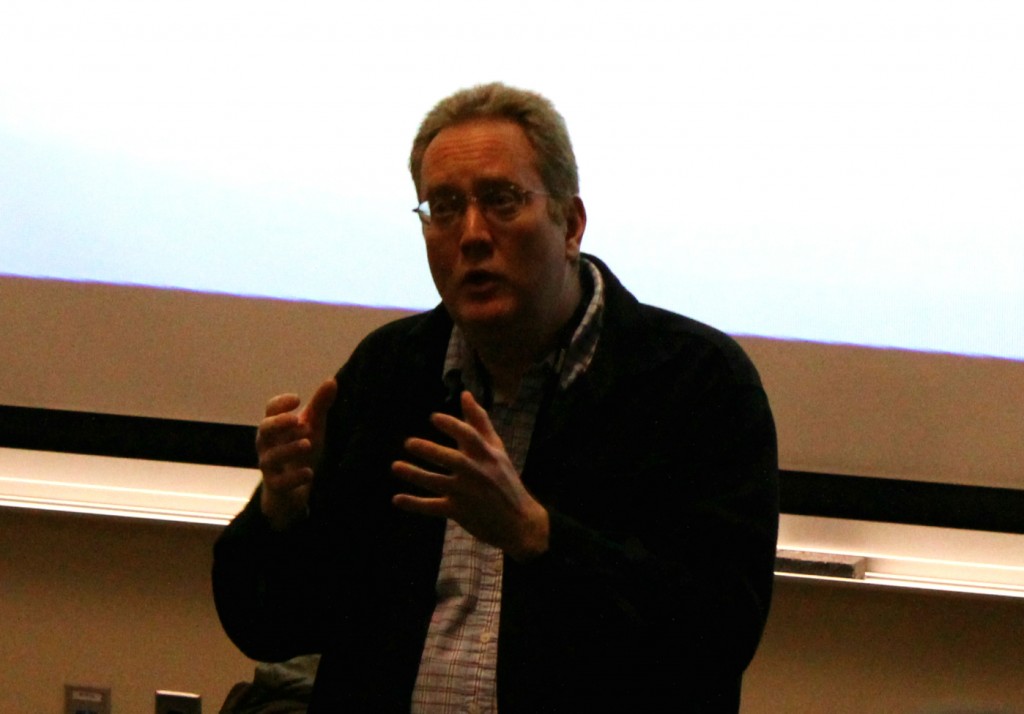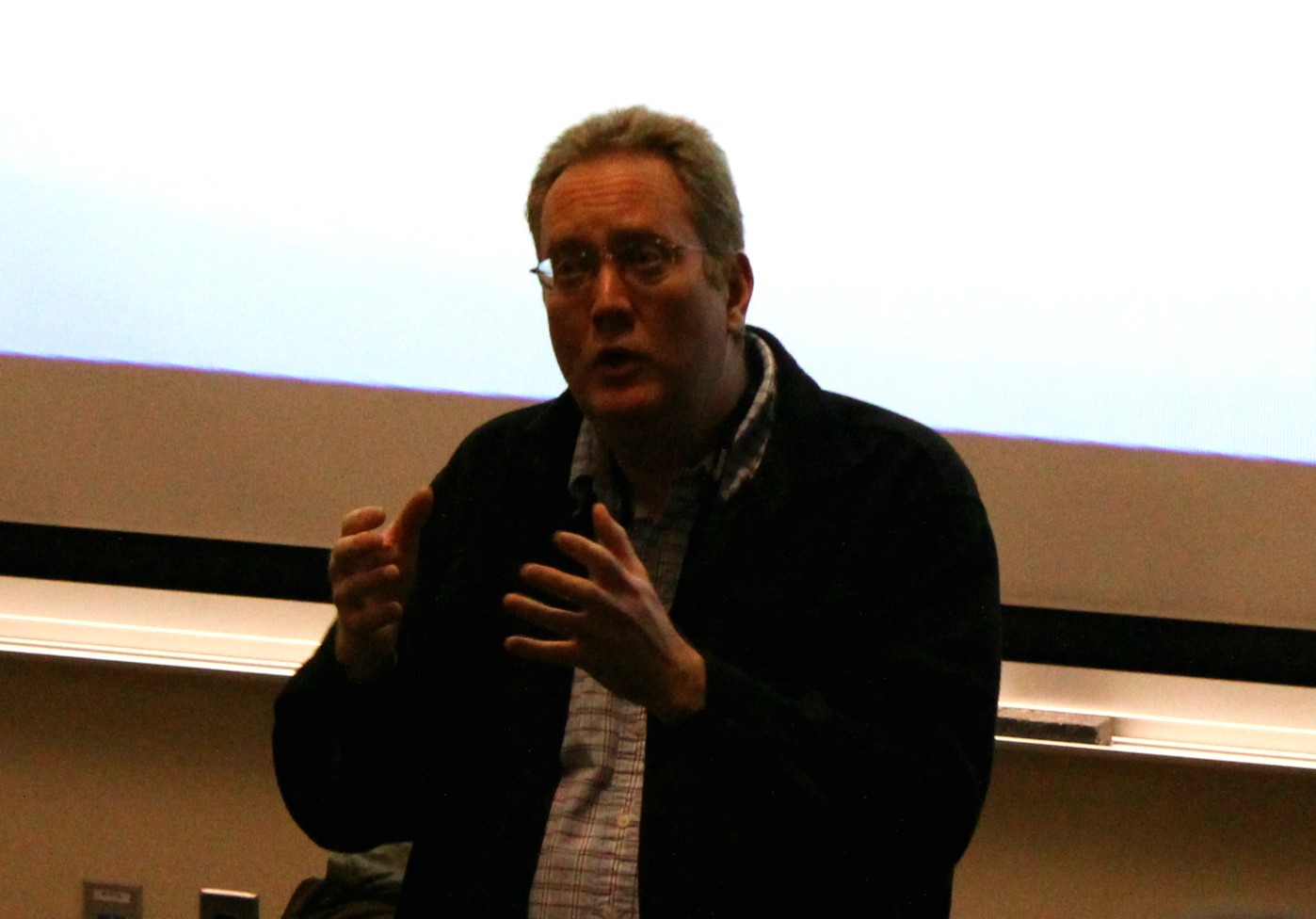

Photo Credit / Rebecca Jasulevicz
BY REBECCA JASULEVICZ
Science Editor
On March 7, Dr. James Hunt of ESU’s department of biological sciences invited members of the campus and the surrounding community to join his Conservation in Marine Science class, where he presented on sustainable fisheries.
“We’ve been talking a lot in class about some of the problems we’ve had in commercial fishing over the last hundred years or so,” said Dr. Hunt.
He continued, “There are some good examples of sustainable fisheries that have been managed for almost a hundred years in some cases, and so what we want to do is look at those fisheries and see what they are doing. What do they have in common that maybe we can apply to different fisheries?”
According to Dr. Hunt, there are three main ideas that most people have about what it means to be sustainable.
The first is that it means there is a constant, steady supply that can be taken from every year. The quantity of fish in this supply may go up and down with natural variation, but it is stable overall.
The second idea consists of conserving resources for the future so that future generations may experience the same resources and abilities that can be practiced now.
Finally, the third idea about what it means to be sustainable is maintaining biodiversity and ecosystem health. In this view, the fish stock would not be the only variable being watched, as it includes the environment and abiotic factors as well.
“There is a potential conflict between social needs and biological needs, and we have to be aware of that too when we use the term sustainability,” said Dr. Hunt.
He continued, “Sustainable management of fisheries cannot be achieved without an acceptance that the goals of fisheries management are the same as those of environmental conservationists. There is a growing recognition that very often environmental scientists and fisheries managers are really targeting the same thing, which is healthy, robust ecosystems that can be fished theoretically forever.”
Two fish populations that have been managed successfully are those of the pacific halibut and the sockeye salmon.
The pacific halibut, a species that can reach 500 pounds and live up to 55 years, experienced a decline in catch per unit effort around 1915.
The catch per unit effort is an indirect measure of the abundance of the stock.
While it may be impossible to measure how many fish of a specific species are present in the ocean, it is possible to look at the number of fishing boats going out and how much stock is being caught.
In 1923, the International Pacific Halibut Commission was established with the intent of managing the quantity of pacific halibut that can be taken by American and Canadian fishermen.
This ensures that the stock will remain at healthy levels, and in the 1930s, the stock rebounded.
According to Dr. Hunt, “Although [the stock] has risen and fallen, it’s actually grown and is at its highest level today.”
The next sustainability success story that Dr. Hunt gave was that of the sockeye salmon, a species that has a history of being fished intensively in Bristol Bay, Alaska. The management of these fish is conducted by the Alaska Department of Fish and Game.
How many sockeye salmon can be taken from the bay is based upon escapement, the number of fish allowed to escape the fishery and spawn. While this could not be done for pacific halibut, it is more easily done for sockeye salmon.
While these fish spend most of their time out at sea, the sockeye salmon will swim up small, shallow streams in order to reach areas to spawn. While in the shallow streams, the salmon are easily visible, and every hour for ten minutes an individual will stand in a tower and count the number of fish in the stream.
“Salmon fisheries tend to have better data because we can literally count the fish,” said Dr. Hunt, “We don’t have to rely on catch per unit effort, an indirect measure, because we can see and count how many spawners are going out of each of these stations.”
Alaskan fisheries can look at the number of salmon present and compare the population to that of previous years. If the salmon population is not doing as well as it has previously, the fishery can deny fishermen until the spawning numbers increase.
Good data collection is vital for successful fishery management, and Dr. Hunt commends the ability of fishermen to be understanding. While it may be difficult, as fishing may be these individuals’ livelihoods, fishery management is important for producing a sustainable practice.
Dr. Hunt said, “The question is simply ‘are there ways of managing fisheries that meets the needs of people against the biological health of the fishery for the long term?’ The answer is yes there are.”
Email Rebecca at:
rjasulev@live.esu.edu

